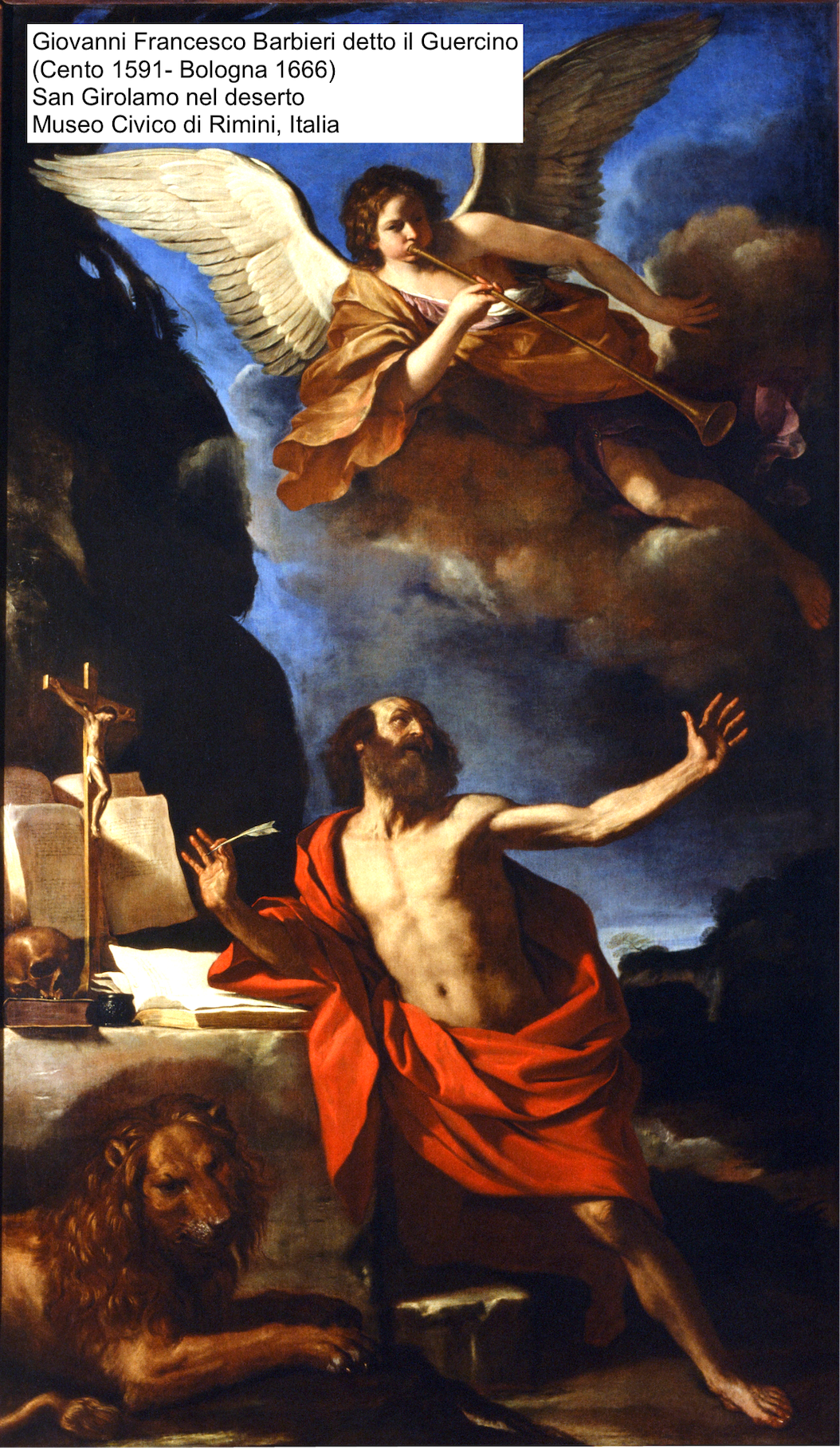Capolavoro del '600 emiliano 'San Girolamo penitente'
Giovanni Francesco Barbieri detto il Guercino (1591- 1666), bottega di
Workshop of Giovanni Francesco Barbieri called il Guercino (Cento 1591- Bologna 1666)
Possible attribution to Cesare Gennari (Cento 1637 - Bologna 1688)
Penitent Saint Jerome in the cave
100 x 75 cm.
with frame 121 x 95 cm.
This superb Saint Jerome, one of the most popular and recurring figures in seventeenth-century pictorial works, is a work of extraordinary visual impact, showing the Christian monk portrayed as a hermit while, kneeling, he strikes his chest with a stone as a sign of penance .
The painting is undoubtedly indebted to the models created by Giovanni Francesco Barbieri known as Guercino (1591-1666), who repeatedly addressed the subject with multiple illustrative methods.
The quality of the execution, and the fact that there are no strictly similar images, suggest that the canvas is to be included in the very complex catalog of the works performed by the shop, presumably under the supervision of the master himself.
The specific study of painting would induce us to probably attribute the authorship to an artist trained in his workshop, recognizable in Bartolomeo Gennari (Cento 1594 - Bologna 1661). Son of Hercules and Guercino's sister, Lucia Barbieri, Cesare studied with his older brother Benedetto in his uncle's Bolognese atelier, of which he became the most profound interpreter, painting countless copies at least until the sixth decade, when he certified his autonomous production .
Numerous paintings in private collections and in important public collections are a fundamental comparative term with this beautiful and sentimentally intense canvas. Among these, in terms of figurative conception, luminism, colorism and brushstroke, the painting approaches in execution the large altarpiece with the image of St. Jerome in the desert, which stood on the high altar of the Oratory dedicated to the Saint of Rimini, now exhibited in the city's Civic Museum. Masterpiece created by the great master, and certainly a source of inspiration for his most talented disciples.
The Saint, with his slender body, all tense tendons and rigid bones, is placed in contrast with the large red drapery of the mantle that surrounds him, alluding to the cardinal's dignity. The books, one of which is open, are his canonical iconographic attributes, referring to the fruitful activity of Jerome's scholar, biblical scholar and theologian, who made him the forerunner of the Renaissance humanist.
In particular, the reference to a letter is read on the pages of the book open to his left ('epi', for epistle, letter in Latin, 65). Typical iconography sees the saint in the desert where he retired both to live his vocation as a hermit and to wait for the translation of the Bible, part of the Old Testament from Greek to Latin.
The painter emphasizes the feeling of amazement and drama, through the motion of the ascetic, who opens his arms and stretches the body along a diagonal.
A touch of poetry of the composition is the landscape that is the background of the scene, poetic and evanescent, where an intense ultramarine blue is ready to welcome the light of dawn, with the strong symbolic value that derives from it. The beauty of the work is reflected precisely in the wise chromatic contrast that emphasizes the ethereal incarnate of the Saint with the red robe and in the refined tonal variation of the sky, which gives the work a suspended and imminent atmosphere.
Conservation status of the work:
The painting, whose excellent conditions offer us an optimal reading, denotes a very precise brushstroke of undoubted quality, presenting the hand of a painter with a strong identity, undoubtedly a highly talented pupil.
The painting is in excellent condition, with a nice patina and a pleasant uniform crachelè. The work has also been professionally relined in the last century, and has been equipped with an ancient frame in lacquered wood.

